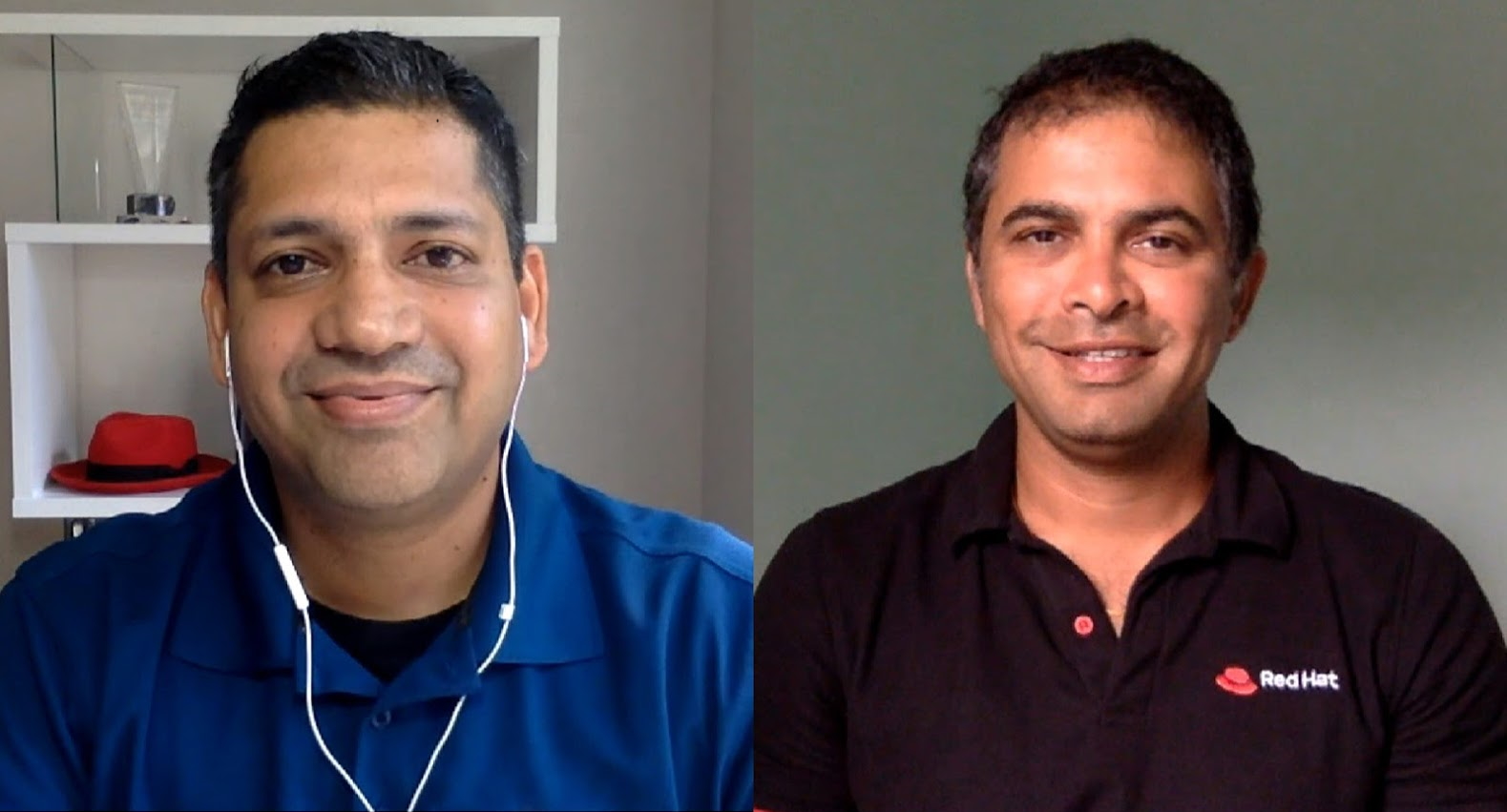 CLOUD
CLOUD
 CLOUD
CLOUD
 CLOUD
CLOUD
Banks demand security and compliance across mission-critical environments, and one of the largest financial institutions in the world relies on Red Hat Inc. and OpenShift to deploy data-intensive workloads using artificial intelligence and machine learning.
The Royal Bank of Canada and its 86,000 employees rely on Red Hat’s OpenShift for its container orchestration system to manage key financial production workloads and provide an AI-powered private cloud platform.
“This solution is helping them transform the customer banking experience by being able to deliver intelligent apps and improve the operational efficiency of their organization,” said Abhinav Joshi (pictured, left), senior manager of OpenShift product marketing at Red Hat. “They are able to run thousands of simulations and be able to analyze millions of data points in a fraction of time as compared to the solution that they had before.”
Joshi spoke with Stu Miniman, host of theCUBE, SiliconANGLE Media’s livestreaming studio. He was joined by Tushar Katarki (pictured, right), senior manager of OpenShift product management at Red Hat, and they discussed the use of Kubernetes and OpenShift for AI projects, how one healthcare provider implemented Red Hat’s solutions, and a growing ecosystem around tools for application lifecycle management. (* Disclosure below.)
The use case at Royal Bank exemplifies the integration of various Red Hat and other open-source technologies to support AI and machine-learning initiatives. The bank was already experimenting with Apache Spark and Kubernetes to assist with its intelligence tools. OpenShift was used to manage workloads requiring both CPU and GPU resources.
“Kubernetes, DevOps and OpenShift for software development are directly applicable for AI projects to make them more agile and get them into production,” Katarki said. “App developers will use the output of what the data scientists have used in terms of models and then incorporate them into services.”
Another use case for AI and machine-learning deployment involving Red Hat’s solutions can be found in HCA Healthcare. The organization needed insights from data to address sepsis, a condition where failure of the body’s immune system results in 270,000 U.S. deaths per year.
Using Red Hat’s automation, management and analytics software, HCA created a Sepsis Prediction and Optimization of Therapy platform to analyze clinical data in real time and provide caregivers with an early warning system for the onset of sepsis in patients.
“They developed an innovative machine learning-powered data platform on top of OpenShift to help save lives,” Joshi said. “We’re seeing a lot of traction in all types of industries.”
In 2016, CoreOS introduced an Operator pattern to speed deployment of applications into a Kubernetes-based cluster. This has evolved into Kubernetes Operators to help manage the lifecycle of an entire application.
The resulting growth of an ecosystem around Kubernetes Operators led Red Hat to open a public registry — OperatorHub.io — last year so that developers and administrators could have easier access to pre-tested Operators for applications.
“The Kubernetes Operators ecosystem is flourishing, and we have increased that with Open OperatorHub, which is comprised of community Operators,” Katarki explained. “We have certified Operators and certified applications from the AI and machine-learning independent software vendor community in the Red Hat Marketplace. It becomes easy for end users to deploy these ISVs.”
Watch the complete video interview below, and be sure to check out more of SiliconANGLE’s and theCUBE’s CUBE Conversations. (* Disclosure: TheCUBE is a paid media partner for the KubeCon + CloudNativeCon Europe 2020 Virtual Experience. Red Hat Inc. sponsored this segment of theCUBE. Neither Red Hat nor other sponsors have editorial control over content on theCUBE or SiliconANGLE.)
Support our mission to keep content open and free by engaging with theCUBE community. Join theCUBE’s Alumni Trust Network, where technology leaders connect, share intelligence and create opportunities.
Founded by tech visionaries John Furrier and Dave Vellante, SiliconANGLE Media has built a dynamic ecosystem of industry-leading digital media brands that reach 15+ million elite tech professionals. Our new proprietary theCUBE AI Video Cloud is breaking ground in audience interaction, leveraging theCUBEai.com neural network to help technology companies make data-driven decisions and stay at the forefront of industry conversations.